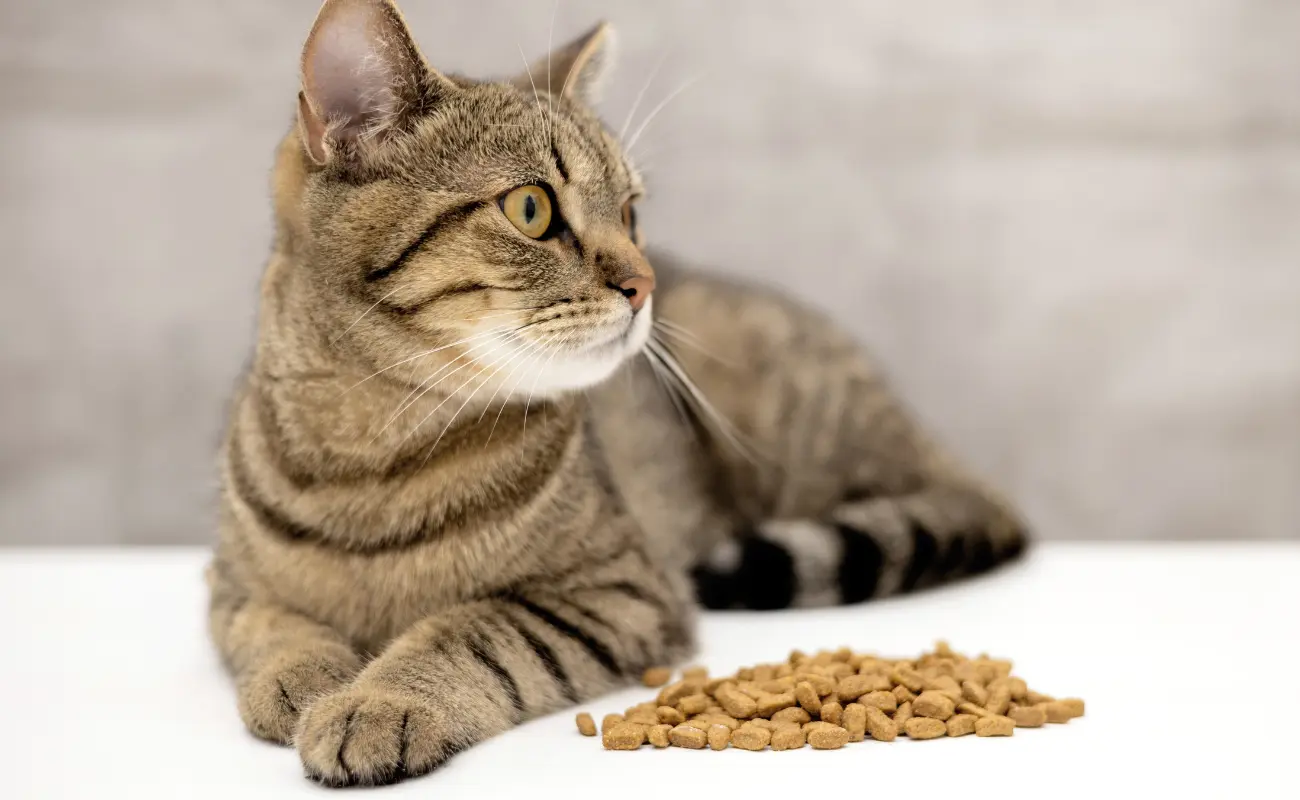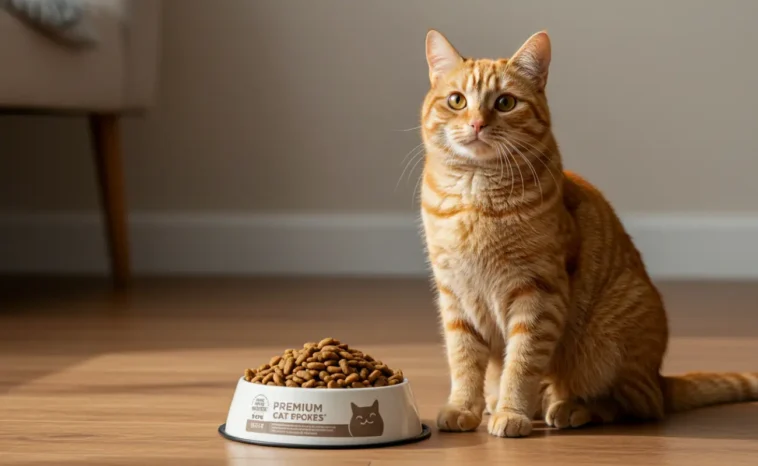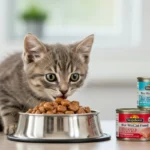Introduction
Are you searching for the best indoor cat dry food that keeps your feline friend healthy and satisfied? With so many options available, it can be overwhelming to find the right choice for your cat’s unique needs. Indoor cats have different dietary requirements than outdoor cats, making it crucial to pick the right nutrition to maintain their well-being.
In this guide, we’ll explore the best indoor cat dry food, including key factors to consider, benefits, and expert recommendations. Plus, we’ll provide essential tips to ensure your cat stays healthy and happy. How Much Dry Food Should a Cat Eat a Day? Avoid Overfeeding & Obesity
Overview: Understanding Indoor Cat Nutrition
Indoor cats generally lead a more sedentary lifestyle than their outdoor counterparts. As a result, they require a diet that:
- Maintains a healthy weight
- Provides essential nutrients
- Reduces hairballs
- Supports digestive health
Choosing high-quality good indoor cat dry food ensures your cat gets balanced nutrition while minimizing potential health issues like obesity and digestive disorders.
Key Factors in Choosing the Best Indoor Cat Dry Food
1. High-Quality Protein Sources
Indoor cats need a protein-rich diet to maintain lean muscle mass. Look for ingredients like:
- Chicken
- Turkey
- Salmon
- Duck
Avoid: Fillers like corn, wheat, or soy, which offer little nutritional value.
2. Balanced Fat Content
Fat is an essential energy source, but excessive amounts can lead to weight gain. Choose cat food with moderate fat content (around 10-15% fat).
3. Fiber for Digestive Health
Fiber helps prevent hairballs and supports healthy digestion. Some great fiber sources in cat food include:
- Beet pulp
- Pumpkin
- Brown rice
4. Essential Vitamins & Minerals
Look for essential nutrients such as:
- Taurine (for heart and eye health)
- Omega-3 & Omega-6 fatty acids (for skin and coat health)
- Probiotics & prebiotics (for digestive support)
5. No Artificial Additives
Avoid artificial flavors, colors, and preservatives, as these may cause allergies or digestive problems in cats.

Common Questions About the Best Indoor Cat Dry Food
1. What is the healthiest dry cat food for indoor cats?
The healthiest dry food for indoor cats contains high-quality protein, fiber, and essential vitamins. Some top-rated options include:
- Blue Buffalo Indoor Health
- Hill’s Science Diet Indoor Cat Food
- Wellness CORE Grain-Free Indoor Formula
- Purina ONE Indoor Advantage
2. Can indoor cats eat regular dry food?
While they can, indoor cats benefit more from specially formulated indoor dry food, which has the right balance of nutrients and calories to prevent weight gain and digestive issues.
3. How often should I feed my indoor cat dry food?
Most indoor cats do well with two meals per day, but portion size matters. Learn more in our guide: How Much Dry Food Should a Cat Eat a Day? Avoid Overfeeding & Obesity.
4. Should I mix dry and wet food?
Yes! Mixing wet and dry food provides hydration while maintaining the convenience of kibble.
Tips for Feeding Your Indoor Cat
1. Stick to a Feeding Schedule
Cats thrive on routine. Provide meals at the same time each day to regulate digestion and appetite.
2. Measure Portions to Prevent Overfeeding
Overfeeding is a common issue in indoor cats. Always check the recommended serving size on the packaging.
3. Provide Fresh Water Daily
Hydration is essential for kidney health. Always ensure your cat has access to clean, fresh water.
4. Choose Age-Appropriate Food
Kittens, adult cats, and senior cats have different nutritional needs. Select a food formulated for your cat’s age group.
5. Rotate Protein Sources
Introducing different protein sources prevents food boredom and ensures your cat gets a variety of nutrients.
Challenges and Solutions Related to Indoor Cat Nutrition
1. Weight Gain & Obesity
- Challenge: Indoor cats have lower activity levels, leading to weight gain.
- Solution: Choose dry food with high protein and fiber to promote satiety.
2. Hairballs & Digestive Issues
- Challenge: Indoor cats groom themselves frequently, leading to hairballs.
- Solution: Select a dry food with added fiber and omega fatty acids.
3. Food Sensitivities & Allergies
- Challenge: Some cats develop allergies to common ingredients like grains or chicken.
- Solution: Try limited-ingredient diets or grain-free formulas.
Benefits of High-Quality Indoor Cat Dry Food
1. Supports a Healthy Weight
Formulated indoor cat food has balanced calories to prevent obesity.
2. Promotes Digestive Health
Added fiber and probiotics help maintain a healthy gut.
3. Reduces Hairballs
Many indoor cat formulas include fiber to minimize hairball formation.
4. Enhances Skin & Coat Health
Omega-3 and omega-6 fatty acids keep your cat’s coat shiny and reduce shedding.
5. Long-Term Cost Savings
Investing in high-quality food reduces future vet bills by preventing common health issues.
Expert Opinions on the Best Indoor Cat Dry Food
According to Dr. Emily Carter, DVM, “Indoor cats have unique dietary needs. The best dry food for indoor cats should be protein-rich, low in carbohydrates, and include fiber to prevent hairballs. Brands like Hill’s Science Diet and Blue Buffalo offer excellent formulas tailored to indoor felines.”
Veterinary nutritionist Dr. Mark Reynolds adds, “Look for dry cat food with real meat as the first ingredient and no artificial additives. Rotating between different high-protein formulas can also keep your cat engaged and well-nourished.”
FAQs
1. What is the best dry food for an indoor cat with a sensitive stomach?
Look for limited-ingredient diets like Blue Buffalo Sensitive Stomach or Hill’s Science Diet Sensitive Stomach & Skin.
2. Can kittens eat indoor cat food?
No, kittens require a higher calorie and protein intake. Choose kitten-specific food until they are at least one year old.
3. Do indoor cats need grain-free dry food?
Not necessarily. Some cats thrive on grain-inclusive diets, while others benefit from grain-free formulas, especially if they have allergies.
4. How can I transition my cat to a new dry food?
Gradually mix the new food with the old food over 7-10 days to prevent digestive upset.
Conclusion
Choosing the best indoor cat dry food ensures your feline friend stays healthy, active, and happy. Focus on high-quality protein, fiber, and essential nutrients while avoiding fillers and artificial additives. By selecting the right food and following feeding best practices, you can enhance your cat’s well-being and longevity.
What’s your cat’s favorite dry food? Share your experiences in the comments below!





